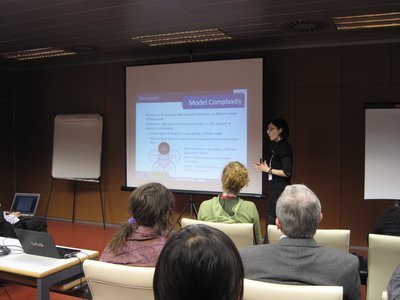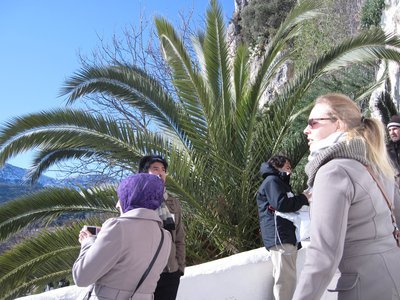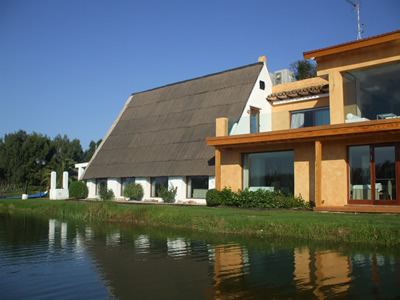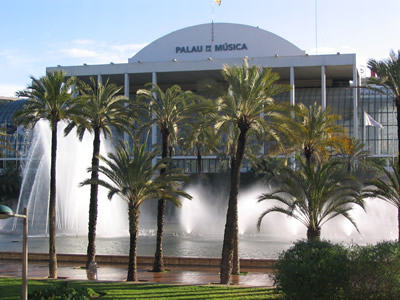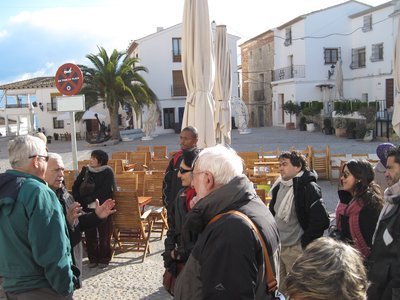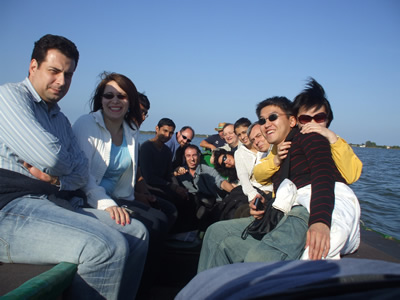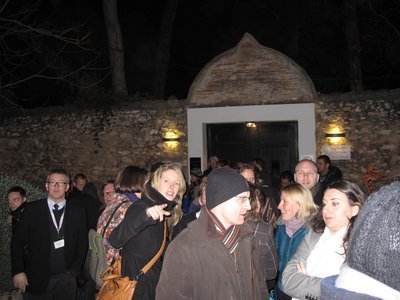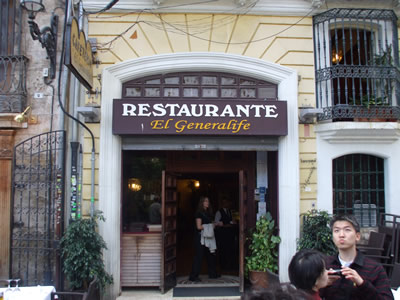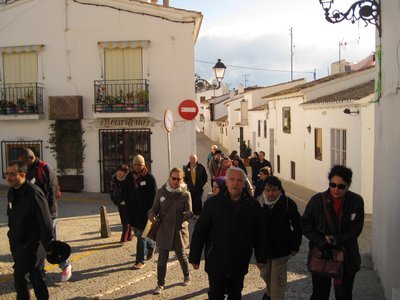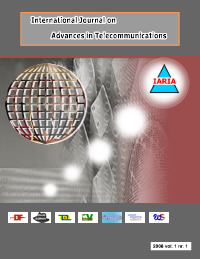AICT 2025 - The Twenty-First Advanced International Conference on Telecommunications
April 06, 2025 - April 10, 2025
AICT 2025
Onsite and Online Options: In order to accommodate various situations, we are offering the option for either physical presence or virtual participation (pdf slides or pre-recorded videos).
ISSN: 2308-4030
ISBN: 978-1-68558-248-7
AICT 2025 is colocated with the following events as part of DataSys 2025 Congress:
- AICT 2025, The Twenty-First Advanced International Conference on Telecommunications
- ICIW 2025, The Twentieth International Conference on Internet and Web Applications and Services
- ICIMP 2025, The Twentieth International Conference on Internet Monitoring and Protection
- SMART 2025, The Fourteenth International Conference on Smart Cities, Systems, Devices and Technologies
- IMMM 2025, The Fifteenth International Conference on Advances in Information Mining and Management
- INFOCOMP 2025, The Fifteenth International Conference on Advanced Communications and Computation
- MOBILITY 2025, The Fifteenth International Conference on Mobile Services, Resources, and Users
- SPWID 2025, The Eleventh International Conference on Smart Portable, Wearable, Implantable and Disability-oriented Devices and Systems
- ACCSE 2025, The Tenth International Conference on Advances in Computation, Communications and Services
AICT 2025 Steering Committee
|
 |
Dragana Krstic
University of Niš
Serbia
|
|
 |
Kevin Daimi
University of Detroit Mercy
USA
|
|
 |
Gautam Srivastava
Brandon University
Canada
|
|
 |
Sergei Semenov
HiSilicon
Sweden
|
|
 |
Sonia Ben Rejeb
ISI/University El Manar
Tunisia
|
|
 |
Nader F. Mir
San Jose State University
USA
|
|
 |
Dragana Krstic
University of Niš
Serbia
|
|
 |
Kevin Daimi
University of Detroit Mercy
USA
|
|
 |
Gautam Srivastava
Brandon University
Canada
|
|
 |
Sergei Semenov
HiSilicon
Sweden
|
|
 |
Sonia Ben Rejeb
ISI/University El Manar
Tunisia
|
|
 |
Nader F. Mir
San Jose State University
USA
|
AICT 2025 conference tracks:
Trends on protocols and communications models
DNS resolvers; Scheduling streamed information; Adaptive streaming; TCP-based streaming; Impatience in cellular networks; Analysis of transient phases; Setup delays servers; Spatial-temporal traffic models; Stability models; Rendezvous algorithms; Network coding; Opportunistic protocols; Cooperative data exchange; Energy efficient-contention protocols; Named data networking; Adaptive contention window; Network mobility models; Spectrum aggregation schemes; Smart meters; Dynamic load; Environment adaptive routing protocols; Geographic and virtual coordinates; High spectral efficiency communications; Power constraints; Video broadcast; Multicell networks; Energy harvesting; Interference avoidance; MIMO and massive MIMO; Channel feedback protocols; Computation offloading; Path-cooperative transport
New telecommunications technologies
Software defined data centers; Botnet in SDNs; Software defined 5G networks; HetNets and 5G; Smart buildings and IoT; Secure SDNs; Standardization for IoTs; 4G to 5G translation; Managing 5G LTE-Advanced networks; LTE heterogeneous networks; LTE-R measurements; Scheduling for LTE-Advanced; Traffic with Big Data; QoE-aware radio; QoS and QoE in LTE networks; Telecommunications in Smart Cities; IoT virtual networks; Device-to-device Internet; Mobile clouds; Smart and sustainable cities; Public data centers; Traffic profiles in data centers; Smart energy; Car Connectivity; Green communications systems
Trends on telecommunications features and services
Cloud services for communities and citizens; Mobile location analytics; Video distribution networks; Dynamic video streaming; Cross-layer energy optimization; Power-aware media; Digital platforms regulation; Content delivery networks; M2M protocols; Identity management; Converged communication networks; Web-based communication services; Node localizations; Indoor positioning; Management plane; Community structure detection; Preventing DDoS attacks; Multifactor authentication; Man-in-the-middle attacks; Bundle streaming service; Self-organizing cloud cells; Soft-coded and hard-coded relaying
Signal processing, protocols and standardization
Standardization (IEEE 802.17, Policy Models, Etc.); IEEE 802.11 engineering; Telecommunications protocol engineering; Future networks: protocol and standards;
Standardization (IEEE 802.15, IEEE 802.16);
Communication theory, signal processing, modulation;
Modulation, coding and synchronization;
Propagation, antennas and channel characterization;
Signal separation and Interference rejection;
Critical infrastructure protection
Architectures and communication technologies for 4G and 5G wireless networks
5G technologies and networking; Mobile network expansion solutions (small cells, Cloud-RAN, etc.); 5G radio-access networks (RAN); D2D communications in cellular networks; Aggregation techniques and interaction with unlicensed wireless technologies; Communications over mmWave spectrum; End-to-end network architecture and infrastructure; Interworking between heterogeneous networks and technologies; Automated management, orchestration and operation of network functions; Software defined networking (SDN) and 5G; Mobility management, energy efficiency, power cost reduction in 5G networks; Network function virtualization (NFV) of small cells; Self-organizing network functionalities for virtualized small cells; The role of open source software in 5G; Indoor/outdoor positioning; Massive connectivity handling; Technoeconomics of future mobile networks; New telecommunications business models
Ad Hoc, autonomic and sensor networks
Autonomic home networking;
Sensor, mesh, and Ad hoc networks;
Programmable networks;
Active networks;
Self-organization and network reconfiguration;
Partial and intermittent resources and services;
Unicast and multicast routing;
Radio resource sharing in wireless networks;
Energy-efficient communications;
Vehicular Ad hoc networks;
Underwater sensor networks;
Emerging sensor technologies;
Intelligent video surveilance;
Multi-sensor surveillance;
Wireless technologies
4G, 5G and 6G Mobile communications services; Evolution from 4G to 5G and beyond;
Wireless multimedia and networks and systems;
Cellular and Ad hoc networks;
Mobile broadband technologies;
Mobile software (agents);
Wireless access (WPAN, WLAN, WLL);
Wireless communications antennas and propagation and transmission technologies;
Vertical, horizontal and diagonalhandover;
Broadband wireless technology (HSDPA, HSUPA, LTE, Wimax, Wiran);
Cross-layer modeling and design;
Heterogeneity and diversity;
Ultra-wideband communications (UWB);
Wireless hacking;
Management, operation and control networks
Monitoring telecommunicaitons systems;
Network management contingency challenges;
Real-time traffic and QoS;
Performance and QoS, traffic engineering (MPLS, Diffserv, Intserv, Etc.);
Telecommunications management and control of heterogeneous networks;
Mobility control and mobility engineering;
Mobile video surveillance;
Mobility and QoS management;
Communications networks security;
Information security;
IPR and network security;
Core technologies and access technologies and networks
Wireless-fiber convergence; Metro/Access networks; Broadband access networks and services; Next Generation Networks and technologies; Future Internet; Inteligent & Smart networks; Grid, Cluster and Internet computing; Designing and management of optical networks; Performance of optical networks; Future technologies in optical communications; PLC (Homeplug, OPERA, UPA, CEPCA, IEEE, HD-PLC Alliance);
Future applications and services
Service-oriented architectures;
E-Learning and mobile learning on telecommunications;
SOHO (Small Offices/Home Offices;
Emerging telecommunications software tools;
Object and component technologies in telecommunication software;
Platforms for Web Services-based applications and services;
Web Services communications, applications, and performance;
Applications in telemedicine; Security and trust in future services applications;
Optical Technologies
Optical internetworking architectures; Novel architectures for optical routers and switches; Optical packet / burst switching; Optical multi-wavelength label switching; Optical network performance modeling; Optical network control and management; Measurement, monitoring and supervision techniques; Security and privacy in optical networks; Optical access networks designs and protocols; High speed optical LANs and gigabit Ethernet; Energy efficiency in optical networks; Inter-working between optical and wireless networks; Optical Grids, optical networking for cloud computing; Optical integrated circuits and novel transmission methods; Standards for optical internetworking; Optical networks for future Internet design; Multi-domain routing protocols for IP over optical networks; Control and management protocols for IP over optical networks; Next-generation IP networking and Optical Internet; Development prospect for Optical Internet; Optical transmission systems and technologies; Optical access systems and technologies; Optical devices
Cognitive radio
Cognitive radio technologies and opportunistic spectrum utilization; Spectrum sensing technologies; Dynamic spectrum access; Information theory and performance limits of dynamic spectrum access; Distributed algorithms for spectrum detection and cooperative spectrum sensing; Inter- and Intra- standards interoperability; Cross-layer algorithms based on spectrum sensing techniques; Advanced signal processing techniques for cognitive radio; Physical-layer design of software radio and cognitive radio transceivers; Interference and coexistence analysis; Radio resource allocation; Decision making; Game theory; Cognitive radio with reinforcement learning; SWR and CR management; Cognitive radio sensing in the large and feature detection; Spectrum and performance management in cognitive radio networks; Cognitive radio applications; Future Internet with cognitive technologies; Flexible and opportunistic wireless access; Multimedia communications through cognitive networks; Regulatory policies on spectrum sharing for future broadband networks; Cognitive radio standards; Cognitive radio architecture for equipments; Enabling SDR technology for cognitive radio; Hardware reconfigurability; Testbbeds
Teletraffic modeling and management
Traffic and performance measurements;
Traffic characterization and modeling;
Trends and patterns; Scaling phenomena;
Packet and flow level models;
Traffic control and QosS;
Queuing theory and queuing networks;
Performance evaluation;
Scheduling and admission control;
Reservation and priority mechanisms;
Overload control;
Broadcast and multicast traffic control;
Analytical and numerical analysis;
Network design and optimization of wired and wireless networks;
Mobility and resource management;
Traffic monitoring and management;
Traffic engineering in multi-technology networks;
Internet traffic engineering;
Traffic grooming;
Simulation methodology for communications networks;
Simulation models and tools;
E-Learning and telecommunications
Architecture of learning technology systems;
Advanced uses of multimedia and hypermedia;
Integrated learning and educational environments;
National and international projects on e-learning and telecommunications;
Remote and wireless teaching technologies;
Navigational aspects for learning;
e-Learning industry and universities programs;
Anytime/anywhere e-learning and wearable network devices;
Tutoring e-learning applications and services;
Cost models for e-learning on telecommunications;
Satellite technologies for e-learning;
Teaching e-learning methodologies and technologies;
Adaptive e-learning and intelligent applications/tools;
Agent technology;
Training e-learning teachers;
Practical uses of authoring tools;
Application of metadata and virtual reality;
Collaborative learning/groupware;
Intelligent tutoring systems;
Internet based systems;
Application of instructional design theories;
Evaluation of learning technology systems;
Standards related activities
Deadlines:
Submission | Jan 20, 2025 |
Notification | Feb 16, 2025 |
Registration | Feb 28, 2025 |
Camera ready | Mar 05, 2025 |
Deadlines differ for special tracks. Please consult the conference home page for special tracks Call for Papers (if any).
